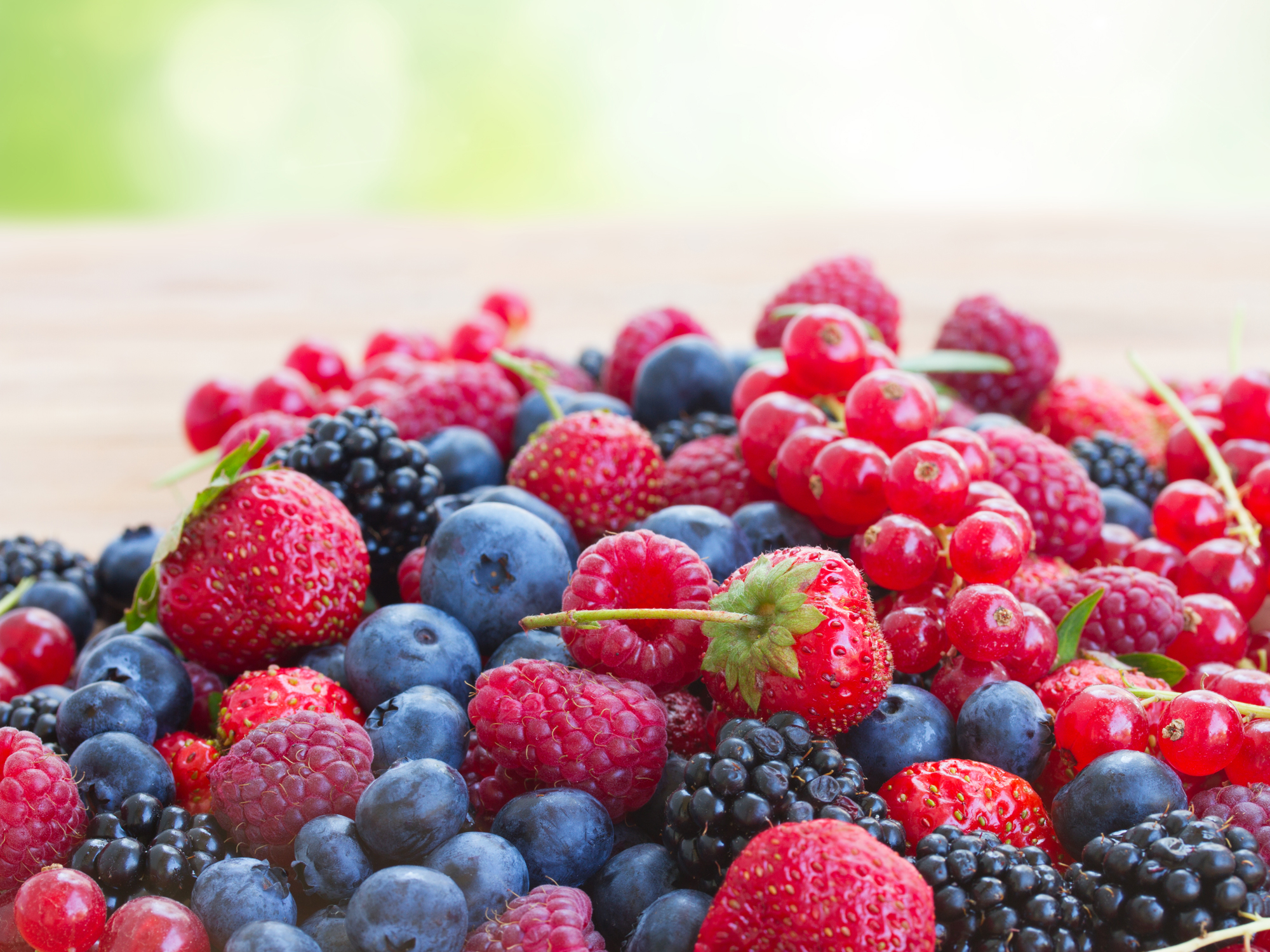Get Easy Health Digest™ in your inbox and don’t miss a thing when you subscribe today. Plus, get the free bonus report, Mother Nature’s Tips, Tricks and Remedies for Cholesterol, Blood Pressure & Blood Sugar as my way of saying welcome to the community!
Beat brain aging and cancer with this summer berry

In my book, the best part about summer is fresh berries.
Blueberries, blackberries, raspberries, strawberries — they’re everywhere! And they’re so much more delicious in the summer than they are at other times of the year.
If you’re anything like me, then you find it hard to resist these perfectly ripe, sweet summer berries, so you eat more of them… which is great news for your health because berries are one of the most spectacular superfoods.
Take blueberries, for example…
You’ve probably heard that blueberries improve brain function, strengthen your bones, lower your cholesterol and fight cancer, among other things. They’re a potent, nutritionally rich berry that’s gotten a lot of health-related press in recent years.
But there’s another berry that won’t be outdone by its blue brother because it can have a powerful effect on brain aging, cancer and other diseases too. In fact, recent research suggests it may be one of the best age-defying, disease-fighting berries around…
Strawberries fight aging and disease
Scientists at the Salk Institute for Biological Studies recently found that an antioxidant compound in strawberries known as fisetin fights cognitive impairment and inflammation in aging mice.
In their study, researchers took mice that were bred to age prematurely and split them into two groups. One group received fisetin with their food and the other group didn’t. After seven months, the difference between the two groups was striking…
Mice who didn’t receive fisetin struggled with every cognitive test they took and had elevated markers for stress and inflammation. Mice who did receive fisetin, however, had significantly better cognitive abilities and inflammation levels.
These results fit perfectly with a previous study conducted by the same researchers in which fisetin reduced memory loss in mice with Alzheimer’s disease. And previous research from these and other researchers shows that fisetin can also ward off diabetes and several types of cancer, including lung, colon, pancreatic, skin and prostate cancer.
So, why is fisetin so darn disease-fighting?
Well, because it’s a flavonoid, that’s why. By now, you’ve probably heard that these antioxidant compounds are some of the most powerful, disease-fighting substances around. And that certainly seems to be the case with fisetin.
Stocking up on strawberries (and other fisetin-rich foods)
If you’re ready to fire up your body with anti-aging, disease-fighting fisetin, now is the time. Summer strawberries are everywhere, and they are delicious.
Of course, if you’re not as enthused about summer berries as I am, you can also get fisetin from other fruits and vegetables like:
- Apples
- Persimmons
- Grapes
- Onions
- Cucumbers
- Mangoes
Fisetin is even available in supplements. But you know it’s always more effective to get your healthy compounds from whole foods… and a lot tastier too.
Editor’s note: Discover how to live a cancer prevention lifestyle — using foods, vitamins, minerals and herbs — as well as little-known therapies allowed in other countries but denied to you by American mainstream medicine. Click here to discover Surviving Cancer! A Comprehensive Guide to Understanding the Causes, Treatments and Big Business Behind Medicine’s Most Frightening Diagnosis!
Sources:
- “More evidence shows natural plant compound may reduce mental effects of aging.” — MedicalXpress. Retrieved July 11, 2017.
- Currais, et al. “Fisetin Reduces the Impact of Aging on Behavior and Physiology in the Rapidly Aging SAMP8 Mouse.” — The Journals of Gerontology: Series A, 2017.
- “Flavonoids represent two-fisted assault on diabetes, nervous system disorders: study.” — MedicalXpress. Retrieved July 11, 2017.
- Khan, et al. “Fisetin: A Dietary Antioxidant for Health Promotion.” — Antioxidants & Redox Signaling. 2013 Jul 10; 19(2): 151–162.












